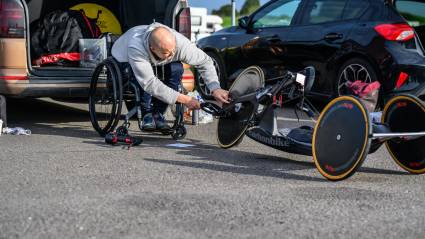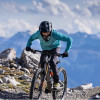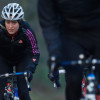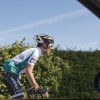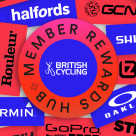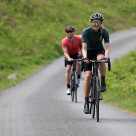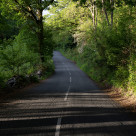Knowledge Level: Intermediate
As your points of contact with the road, your tyres are probably one of the most important but also often neglected components on your bike.
Light weight and low rolling resistance might gain you a few seconds and seem an obvious choice but those gains will be lost and much more if you pick up a puncture. Follow this advice to get the best out of your rubber.
Clinchers or tubeless
Traditional clincher tyres with an inner tube are the most popular option. With a quality clincher and lightweight tube, the difference in weight and ride quality compared to a tubeless is far more marginal than it used to be. Getting a flat with a clincher is a pain but is easy to sort out, needing just a couple of tyre levers, a spare tube and a CO2 cartridge or a quality pump.
Tubeless clinchers use an airtight rim and liquid sealant to run without an inner tube. This reduces rotating mass, negates the risk of pinch flats and, with the sealant inside, penetration flats are instantly fixed. You can also carry an inner tube as an emergency standby. On the downside, set-up is a litte trickier and putting in a standby tube can be messy.
Maintenance
Look after your tyres and make checking them over part of your post-ride routine. Wipe them off and look for any visible damage to the sidewalls or any significant gashes on the main tread. Take special care looking for and removing small stones, flints or glass that might have partially dug into the tread but not penetrated enough to cause a puncture. Do this after every ride and you’ll significantly increase the working life of your tyres and reduce the number of punctures you get.
Pressure
Tyre pressure should be determined by rider weight, road conditions and weather. Don’t just pump them up to their recommended maximum, thinking that harder is always better. On a perfectly smooth surface a harder tyre will roll faster but even small imperfections on the road will cause an over-inflated tyre to skip and jump, reducing rolling efficiency. A too-hard tyre will also give a harsh and fatiguing ride and, on slippery roads, give less grip. Too soft and you’ll be making riding unnecessarily hard work and increasing your risk of punctures.
Experiment with your tyre pressure until you find your ideal set-up. Consider running your rear tyre at a higher pressure (5-10 PSI) than your front and dropping pressure if it’s wet or if the roads are slippery or especially rough. Check your tyre pressure with an accurate gauge before every ride and don’t just assume that your tyres will have stayed inflated from last time.
Weight
With rotating weight a significant speed determinant, putting on super light tyres on race day might seem a no-brainer. Lightweight tyres are usually low on puncture protection and speed gains can easily be wiped out by a flat. For rough British roads we’d always err on the side of more puncture protection and take the hit of a few extra grams.
Width
Narrow doesn’t necessarily translate to fast. At the same pressure a wider tyre will roll better than a narrower one and current aerodynamic thinking is leaning towards wider tyres. However narrower tyres will have a lower rotating mass making them easier to spin up to speed. An important consideration is that the ride quality of a narrower tyre will be harsher and on rough roads during a long ride this can be genuinely fatiguing.
Tread
Don’t be put off by smooth tyres as your grip comes from the tyre deforming to the lumps and bumps on the road and not from any tread pattern. Additionally, because of their profile, width, pressure and typical speed, bike tyres don’t have to channel water away from under them in the same way to a car’s tyres, most water is just pushed out to the side.
Conditions
In wet conditions there is likely to be more debris on the road and, with the water acting as a lubricant for grit and other nasties to penetrate your rubber, punctures are far more common. If rain is expected, opt for a tyre with higher puncture protection. A softer rubber compound will give you more grip in the wet, as will a wider tyre.
Expectations
If your approach is win or bust, PB or nothing, then gambling on super lightweight tyres might give you the edge you’re looking for. However, If you’ve trained hard, travelled and forked out on an entry fee, running marginally heavier but more durable tyres is definitely the sensible and probably the faster option.


